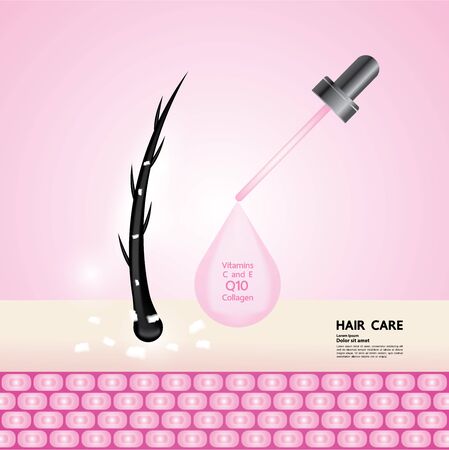Introduction: Laser Hair Removal and British Beauty Culture
In recent years, laser hair removal has become a staple in the British beauty landscape, with more people than ever seeking long-term solutions to unwanted hair. From London’s high-end clinics to local salons across the UK, this treatment has grown in popularity among Britons of all ages and backgrounds. But as demand rises, so do misconceptions and myths that can cloud judgment and cause confusion among potential clients. Addressing these misunderstandings is crucial for British clients, who value both safety and efficacy in their beauty routines. By debunking common myths, we empower individuals to make informed choices that align with their personal preferences and cultural expectations. As we explore the truths behind laser hair removal, it’s important to separate fact from fiction—ensuring that everyone considering this treatment receives clear, trustworthy information tailored to the unique needs and standards of the UK.
2. Fact Versus Fiction: Common Laser Hair Removal Myths Among Britons
Laser hair removal has become increasingly popular across the UK, but along with its rise in popularity comes a fair share of misconceptions. Lets separate fact from fiction by examining some of the most common myths held by Britons regarding laser hair removal.
Is Laser Hair Removal Painful?
One of the most widespread myths is that laser hair removal is unbearably painful. In reality, modern laser technology has made treatments far more comfortable than many expect. While sensations vary depending on individual pain thresholds and treatment areas, most patients describe the feeling as a mild snapping or tingling sensation—comparable to a rubber band flicking against the skin. Topical numbing creams are often available for those concerned about discomfort.
Effectiveness Across Different Skin Tones
Another common belief is that laser hair removal is only suitable for people with fair skin and dark hair. This misconception was rooted in early technology, which struggled to differentiate between pigment in the skin and hair. However, advancements in laser systems now allow safe and effective treatments for a variety of skin tones and hair types commonly found throughout Britain. The key is selecting the appropriate laser wavelength and experienced practitioners who understand diverse skin types.
Suitability by Skin Tone and Hair Colour
| Skin Tone | Hair Colour | Effectiveness |
|---|---|---|
| Fair | Dark | Excellent |
| Fair | Light (blonde/grey/red) | Reduced, may require more sessions |
| Darker (olive/brown/black) | Dark | Good with advanced lasers (e.g., Nd:YAG) |
| Darker (olive/brown/black) | Light (blonde/grey/red) | Limited effectiveness |
Permanency: Is It Really Forever?
A frequent question among Britons is whether laser hair removal offers permanent results. The truth lies somewhere in between: while laser treatments significantly reduce hair growth—often up to 80-90% reduction—some fine or light regrowth can occur over time due to hormonal changes or dormant follicles becoming active. Maintenance sessions are usually recommended every 6-12 months to keep skin smooth long-term.
The Takeaway for Britons Considering Treatment
By dispelling these myths—about pain, suitability for different skin tones, and permanency—Britons can make more informed decisions about whether laser hair removal is right for them. Consulting with experienced UK-based practitioners ensures both safety and realistic expectations tailored to individual needs.

3. What the NHS and UK Experts Actually Say
When it comes to laser hair removal, it’s essential to rely on credible, medically-sound information. In the UK, the NHS (National Health Service) and leading British dermatologists are at the forefront of establishing best practices for both patient safety and treatment efficacy. Here’s what you should know based on their guidance:
Safety: Medically Endorsed Standards
The NHS recognises that laser hair removal is generally safe when performed by qualified practitioners using regulated equipment. Clinics in the UK must comply with strict health and safety standards, especially those registered with the Care Quality Commission (CQC). British dermatologists emphasise the importance of a full consultation and skin assessment prior to any procedure, ensuring suitability and minimising risks such as burns or pigmentation changes.
Efficacy: Realistic Results and Expectations
According to NHS guidelines and expert consensus, laser hair removal offers significant long-term reduction in hair growth rather than permanent removal. The treatment is most effective on individuals with lighter skin and darker hair, but recent advances have improved outcomes for a wider range of skin types. Multiple sessions—often six to eight—are typically required to achieve optimal results. Both NHS resources and dermatologists stress that outcomes vary between individuals, so setting realistic expectations is key.
Aftercare: Evidence-Based Recommendations
Proper aftercare is crucial for both comfort and safety post-treatment. The NHS advises patients to avoid sun exposure, hot baths, and perfumed products on treated areas for at least 24–48 hours. Applying a gentle, fragrance-free moisturiser can soothe the skin, while British experts also recommend using broad-spectrum SPF if going outdoors. It’s normal to experience temporary redness or mild swelling; however, if symptoms persist beyond a few days, seeking medical advice is recommended.
Key Takeaway for Britons
By following NHS-endorsed protocols and consulting with GMC-registered dermatologists, Britons can ensure their laser hair removal journey is guided by science—not myths. Always verify clinic credentials and prioritise evidence-based care for the safest and most effective experience possible.
4. British Skin Tones and Hair Types: What to Really Expect
Laser hair removal is often marketed as a one-size-fits-all solution, but for Britons, the diversity in skin tones and hair types can significantly influence treatment outcomes. The United Kingdom is home to a unique blend of genetic backgrounds, resulting in a wide spectrum of skin colours and hair textures. Understanding how these factors affect laser hair removal is essential for realistic expectations and optimal results.
How Skin Tone Influences Laser Effectiveness
The primary principle behind laser hair removal is targeting the melanin pigment within the hair follicle. Traditionally, lasers work best when there is high contrast between the hair colour and skin tone – typically darker hair on lighter skin. However, many Britons have fair, medium, olive, or dark complexions paired with a range of hair shades from jet black to strawberry blonde.
| Skin Tone | Common Hair Colour | Expected Results | Special Considerations |
|---|---|---|---|
| Very Fair (Type I-II) | Blonde, Red, Light Brown | May require more sessions; some light hairs may not respond well | Test patch recommended; consider advanced lasers like Nd:YAG for safety |
| Medium (Type III-IV) | Brown, Black | Typically excellent results with standard diode or Alexandrite lasers | Monitor for pigmentation changes; sun protection crucial post-treatment |
| Olive to Dark (Type V-VI) | Dark Brown, Black | Effective with proper technology; risk of hyperpigmentation if incorrect laser is used | Nd:YAG laser preferred; experienced practitioner essential |
Diverse British Experiences: Local Case Studies
A 28-year-old woman from Manchester with fair skin and red hair reported minimal reduction after six sessions using a standard diode laser – highlighting that lighter hairs can be resistant. In contrast, a 35-year-old man from London with South Asian heritage (olive skin and coarse black hair) achieved significant reduction after five sessions with an Nd:YAG laser designed for darker skin types.
The Importance of Customised Treatment Plans
The variety among British clients means clinics must assess individual characteristics before recommending a laser type or schedule. Patch testing and consultation are vital steps to ensure both safety and efficacy. Advanced clinics now offer tailored protocols based on Fitzpatrick skin typing, ensuring that everyone from Celtic redheads to Afro-Caribbean Britons receives safe and effective care.
Key Takeaway for Britons Considering Laser Hair Removal:
No two treatments are alike—local expertise and technology selection make all the difference. Always consult with a clinic experienced in treating your specific combination of skin tone and hair colour for best results.
5. The British Approach to Pre- and Post-Treatment Care
Proper preparation and aftercare are vital for achieving the best results with laser hair removal, especially in the unique British climate. Here’s what Britons should know:
Before Your Laser Session: Setting Yourself Up for Success
1. Mind the Weather
Given the UK’s often unpredictable weather, it’s crucial to avoid sun exposure before your treatment—even during rare sunny spells. British skin types vary, but everyone should use a broad-spectrum SPF on the area to be treated and skip fake tanning products for at least two weeks prior.
2. Prepare Your Skin Properly
Gently shave the treatment area 24 hours before your session. Avoid waxing, plucking, or epilating for at least four weeks leading up to your appointment, as these methods remove the follicle required for effective treatment. Hydrate your skin, but skip heavy moisturisers or perfumed products on the day of your appointment.
3. Lifestyle Considerations
If you’re an active commuter or cyclist—a common lifestyle in UK cities—consider wearing loose clothing post-treatment to minimise friction and irritation. On rainy days, ensure treated areas are covered to protect sensitive skin from damp and cold.
Aftercare: Supporting Recovery in the British Climate
1. Soothe and Protect
The UK’s cool air can help reduce redness post-laser, but central heating indoors may cause dryness. Apply a gentle, fragrance-free moisturiser and aloe vera gel as recommended by your practitioner. Continue using SPF daily—even on overcast days—to shield treated skin from harmful UV rays.
2. Avoid Common Irritants
Refrain from hot baths, saunas, and vigorous exercise for at least 48 hours after treatment—common British pastimes such as swimming in chlorinated pools should also be put on hold temporarily.
3. Monitor Your Skin
If you notice prolonged redness or sensitivity beyond a few days—especially after being exposed to brisk winds or rain—contact your clinic for professional advice. Adhering to these pre- and post-care guidelines will help ensure optimal results tailored to Britain’s climate and lifestyle habits.
6. Cost, Convenience, and Accessibility in the UK
When it comes to laser hair removal, many Britons are understandably curious about the true costs, convenience, and accessibility of this popular cosmetic treatment. There’s a lingering perception that laser hair removal is an exclusive luxury, reserved for celebrities or the affluent. However, the reality across the UK is far more nuanced.
Understanding the Costs: Expectation vs. Reality
The expectation is often that laser hair removal comes with a hefty price tag. While it’s true that initial sessions can seem costly—typically ranging from £40 to £200 per session depending on the area treated—the long-term value is frequently underestimated. Consider the cumulative expenses of waxing, shaving products, or salon appointments over the years; laser hair removal can ultimately be more economical in the long run. Furthermore, many reputable clinics across Britain now offer package deals or interest-free payment plans, making the investment far more accessible than in previous years.
Session Frequency: What Should You Anticipate?
There’s a misconception that one session will deliver permanent results. In reality, most individuals require between 6 and 8 sessions for optimal outcomes, spaced about four to six weeks apart. Maintenance treatments may be needed annually. This schedule allows for effective targeting of hair during different growth cycles. For busy Britons juggling work and family commitments, modern clinics now provide flexible appointment times—including evenings and weekends—to accommodate diverse lifestyles.
Accessibility Across Britain: Urban vs. Rural
The notion that high-quality laser clinics are exclusive to London or other major cities is outdated. While urban areas like Manchester, Birmingham, Edinburgh, and Cardiff do offer a greater density of clinics with state-of-the-art technology, smaller towns and even rural locations have seen a notable rise in professional providers over recent years. Online booking systems and virtual consultations have further bridged the gap for those living outside city centres.
Key Takeaway for Britons Considering Laser Hair Removal
Ultimately, laser hair removal in the UK is no longer an inaccessible or inconvenient option. With competitive pricing structures, tailored session plans, and widespread clinic availability from Aberdeen to Southampton, Britons have more options than ever before to make informed choices based on their individual needs and circumstances.
7. Conclusion: Making Informed Choices in the UK
As we draw this myth-busting journey to a close, it’s clear that laser hair removal offers real benefits for Britons seeking a long-term solution to unwanted hair. Understanding the difference between fact and fiction is key. Treatments are safe when performed by qualified professionals, and advances in technology mean most skin tones and hair types can now be considered for laser hair removal. Remember, results are gradual and multiple sessions are often necessary—so patience and realistic expectations are important. It’s also essential to choose a reputable UK clinic that follows strict safety standards and provides tailored consultations. By arming yourself with accurate information and asking the right questions, you can confidently decide whether laser hair removal suits your needs and lifestyle. Ultimately, making an informed choice ensures you enjoy both peace of mind and smoother results on your own terms.


